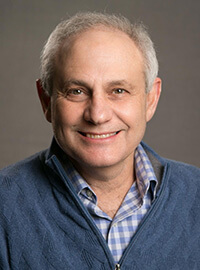The moment a cancer patient learns about their cancer diagnosis, they begin one of the most important conversations they will have with their doctor. Many patients are fortunate to have a clear treatment plan, tested and proven effective through rigorous clinical trials. For others, often diagnosed in the latter stages of disease progression, standard options are limited and clinical trials may be the best path forward.
These conversations are daily occurrences for investigators active in the Hoosier Cancer Research Network. The clinical trial options they present to patients are the result of many months, sometimes years, of a highly coordinated process of protocol development and activation, the inner workings of which are invisible to the patient but as complex as any mechanical system that depends on all parts functioning in harmony. A break anywhere in the process can cause the whole machinery to grind to a halt.
Delays in study development can occur in many stages, including early discussions with research colleagues, contract and budget negotiations with sites and funders, scientific and regulatory review, and site activation. While a short delay in any part of the process may not seem significant, delays can accumulate over time.
 “A day here, and a day there, and a day there all add up,” said HCRN Chief Scientific Officer Shadia Jalal, MD. “If you just think of the idea that cancer doesn’t take a break, it makes it truly urgent to keep a protocol moving, because it could be the difference between life and death for patients.”
“A day here, and a day there, and a day there all add up,” said HCRN Chief Scientific Officer Shadia Jalal, MD. “If you just think of the idea that cancer doesn’t take a break, it makes it truly urgent to keep a protocol moving, because it could be the difference between life and death for patients.”
Dr. Jalal, a thoracic medical oncologist and researcher at the Indiana University Melvin and Bren Simon Comprehensive Cancer Center, shared a recent example of a patient she had hoped to enroll in a study who became ineligible when they developed a spinal cord compression.
“Unfortunately, those things happen all the time while you are waiting for a clinical trial,” she said. “You might have to give your patient a different kind of treatment, so you can keep things at bay waiting for that trial to open.”
Michael Atkins, MD, a medical oncologist and deputy director of the Georgetown Lombardi Comprehensive Cancer Center, said delays can begin as soon as an idea forms in the mind of an investigator, and steps to move a concept toward approval can be fraught with challenges.
 “Those include garnering consensus from the investigators that you work with, the best design for the study, the patient population, eligibility criteria, exclusion criteria, whether you need a phase I run-in to make sure it’s safe, what the phase II dose is, and how many people you need to enroll,” Dr. Atkins said.
“Those include garnering consensus from the investigators that you work with, the best design for the study, the patient population, eligibility criteria, exclusion criteria, whether you need a phase I run-in to make sure it’s safe, what the phase II dose is, and how many people you need to enroll,” Dr. Atkins said.
“Then, if it’s an investigator-initiated trial, you’ve got to find someone who’s willing to support the trial because you just can’t do it, usually, out of institutional funds,” he continued. “So, you prepare a Letter of Intent, submit that to a pharmaceutical company, or other potential funding organization, and hope that they approve it. And once you get approval, you then need to write a protocol. Writing a protocol from scratch takes time and experience. Every question and every potential situation that could occur needs to be addressed in the protocol. Inadvertently omitted items require revisions which can lead to significant delays or even a complete reset of the protocol approval and activation process.”
Despite these challenges, Dr. Atkins said the effort is essential to improving the lives of patients with cancer.
“All the advances that we have made in cancer treatment have come through well designed and well executed clinical trials,” he said. “Just in my field, when I started taking care of patients with kidney cancer, the median overall survival was 10 months. Half the patients died within 10 months. Now, based on two decades of clinical research, moving things that were discovered in the laboratory into the clinic through clinical trials, we have moved the median survival to probably close to five years if not longer.”
 Carey Anders, MD, a medical oncologist and researcher at Duke Cancer Institute, said clear communication from the start has been a key factor in launching studies at her institution.
Carey Anders, MD, a medical oncologist and researcher at Duke Cancer Institute, said clear communication from the start has been a key factor in launching studies at her institution.
“If we just take contracting, for example, one of the things we have recognized is that early and frequent communication with the investigator can help with some of the delays in contracting,” she said. “It helps when we really understand what the investigator’s expectation is, what intellectual property they feel they need to protect or not protect, and what our goals are going in.”
Dr. Anders said this approach has made a measurable difference. “We had a wonderful experience with a phase one study that I’m leading at Duke Cancer Institute. Because the institute has been working hard with activation timelines, we were presented the information in May, opened by August, and had patients in screening and treatment before the end of the year. We all strive for that level of efficiency, but three months is a quick startup time in a large institution.”
Joseph Chao, MD, a medical oncologist and researcher at City of Hope, said his institution has prioritized staffing to ensure critical roles for managing studies are well supported. He said he is grateful to clinical research associates and laboratory staff who work to ensure timely screenings and sample testing so that patients can enroll as quickly as possible on studies. “This is a tremendous benefit to patients who are anxious to learn if they are eligible to participate,” he said.
 Patients who participate in clinical trials often look back with gratitude for the experience, Dr. Chao said. “They’re grateful, realizing how lucky they are when the experimental therapy works. They know that by participating in a clinical trial, they are giving back for the benefit of other patients.”
Patients who participate in clinical trials often look back with gratitude for the experience, Dr. Chao said. “They’re grateful, realizing how lucky they are when the experimental therapy works. They know that by participating in a clinical trial, they are giving back for the benefit of other patients.”
As a contract research organization for investigator-initiated multi-institution clinical studies, Hoosier Cancer Research Network works closely with sponsor institutions and investigators, study funders, and all members of institutional study teams to streamline the lifecycle of a clinical trial: from concept proposal to LOI approval; protocol and EDC development to regulatory, data, and project management; and finally, to publication. Through HCRN’s Clinical Trial Working Groups, investigators receive scientific input from their peers to ensure protocols are well designed and to gauge interest among potential study sites. HCRN also facilitates regular meetings to keep all members of the study team apprised of the study’s progress and to address any concerns or challenges that arise.
Ultimately, the successful completion of all clinical trials, from small pilot studies to major practice-changing trials, relies entirely on the efforts of each member of the study team. And when the team succeeds, patients benefit, Dr. Jalal said.
“Clinical trials can improve survival. They can offer patients new treatment options. They can get them to the wedding they’re trying to go to. They can do all of those things,” she said. “Everyone involved in a clinical trial is vital to helping ensure the best outcome for our patients, and every day counts.”
About Hoosier Cancer Research Network:
Hoosier Cancer Research Network (formerly known as Hoosier Oncology Group) conducts innovative cancer research in collaboration with academic and community physicians and scientists across the United States. The organization provides comprehensive clinical trial management and support, from conception through publication. Created in 1984 as a program of the Walther Cancer Institute, Hoosier Cancer Research Network became an independent nonprofit clinical research organization in 2007. Since its founding, Hoosier Cancer Research Network has conducted more than 230 trials in a variety of cancer types and supportive care, resulting in more than 350 publications. More than 9,000 subjects have participated in Hoosier Cancer Research Network clinical trials.

